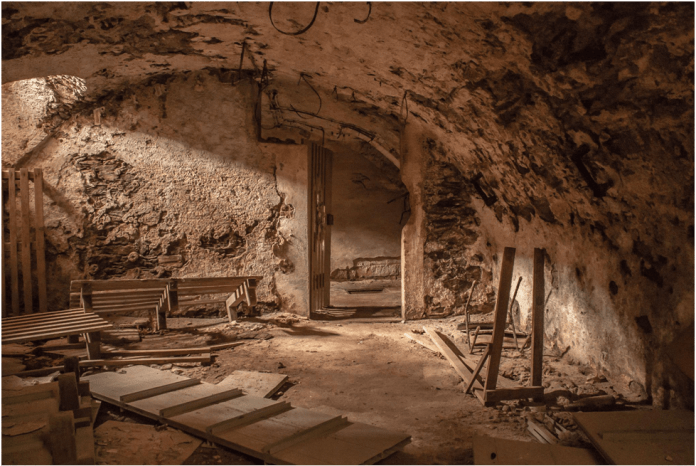The overall wellness of your home depends on a dry basement, which is ensured through basement waterproofing. But with time, homes move and settle. Small fissures are created in the basement walls and foundation as a result, which may cause leaks.
One of the most recommended treatments to stop these water leaks as well as cracks from getting worse is basement waterproofing. Yet when is the ideal moment to waterproof the basement? Why is waterproofing a basement important?
Leaks Lead to Cracks
The fact that a house will eventually settle is not the sole factor in favor of waterproofing your basement. The foundation may expand and shrink as a result of weather variations that are extremely hot and cold. This causes your home’s structure to change even further.
If a storm strikes and is accompanied by freezing temperatures, this might be harmful. One of the few things that expand while frozen is water. This implies that any liquid that seeps into the basement walls’ fissures will cause those cracks to enlarge even more once they freeze.
You don’t have to locate and seal everything yourself. It typically takes a crew to correctly waterproof the basement of a home. With the help of basement waterproofing Lancaster county, you can feel secure no matter what the weather brings by repairing any gaps in your foundation and sealing it, saving the structure and health of your home.
Seasonal Waterproofing
In order to waterproof your basement before the springtime rain and snowmelt, winter is the ideal time to do it. Never let yourself be caught lacking a waterproofed basement with a break or leak during a storm or ice melt. It may result in thousands of dollars in damages you’ll be forced to repair.
There are certain disadvantages to waterproofing your basement in the winter. Freezing earth might make excavation for your foundation harder if it is necessary. No matter the weather, interior repairs may be made, but summer is a preferable season for exterior maintenance if it is necessary.
Summer Weather Resistant
Because the earth will not ever freeze, waterproofing basements in the height of summer is frequently simpler. This makes the procedure of external basement excavation and sealing simpler. Summer heat and dry periods hasten the drying and curing of waterproofing relative to cooler temperatures.
Summer rains would be the largest disadvantage to basement waterproofing in the summer. However, they are rather infrequent, making summer the optimum season.
Dryer concrete lessens any potential interference from extra moisture while sealing and repairing concrete. In most cases, freezing outside temperatures will cease any water seepage in concrete cracks. A far more effective remedy is to fill stress fractures in basement slabs or foundation wall cracks that are not already leaking water in the winter.
Dryer concrete makes it simpler for the sealant to enter concrete pores and interact with concrete’s alkalis.
In the spring, when the pores and crevices of the concrete are internally soaked with water, it would be nearly unthinkable to accomplish this. This is why sealing your concrete and fixing cracks are best done during the chilly winter months.
Prevent Spring Water Seepage
The best method for protecting your basement from groundwater intrusion is to let the concrete completely dry out. Penetrating sealers function by absorbing beneath the surface cover and deeply into the concrete, which is why this is the case. filling the capillaries, micro-fractures, and pores that give the concrete its porous nature.
A significant quantity of rain or snowmelt can result in high water tables and excessive ground moisture, which can make the concrete overly wet and prevent the product from reacting or curing properly. Click here to read more about water tables and ground moisture.
Concrete dust is in your lungs.
People spend more time indoors and in their basements during the winter. You are more likely to breathe in concrete dust if your basement is unfinished. Small pieces of the concrete’s surface are ground away every time anything heavy is dragged over it, metal utensils are dropped, toys have been played with, or a sweeping broom is used.
Concrete dust is unique from other dusts. Sharp silicate (quartz) and alkaline (mostly lime) chemicals found in dusting concrete pierce the lungs and corrode human tissue. Additionally, the symptoms of bronchitis or asthma might be made worse by exposure to concrete dust, which is categorized as a Class 1: Carcinogenic for Humans substance.
Winter Sees a Rise in Radon Gas Levels in Homes
When compared to monitoring during the warmer months, radon levels in residences are often higher in the winter that are capable of doubling or tripling. A clear explanation for this is that, in contrast to warmer seasons when doors and windows are opened more frequently, ventilation is decreased because of windows and doors being closed.
Under soggy ground and snow or ice cover, radon gas that is emitted by radium within the earth becomes trapped. After that, the gas moves naturally to the disturbed earth near basements.
Warm air that rises and escapes is replaced by airflow from the soil (via concrete, cracks, and holes) during the colder months when there is a higher vacuum effect within the home. There are certain amounts of radon gas in this replenished air. As a Class 1 human carcinogen (https://www.cancer.org/cancer/risk-prevention/understanding-cancer-risk/known-and-probable-human-carcinogens.html), radon gas induces lung cancer. Women and children in particular are at increased risk.
Checklist for Basement and Crawl Space Waterproofing
Concrete foundation walls, basement flooring, and crawl spaces should be sealed and waterproofed. By doing so, you may lessen potential moisture buildup and harden the concrete’s surface to reduce concrete dusting.
Fix mortar joint fissures, concrete block fractures, and settling cracks in foundation walls made of poured concrete.
Basement floor stress fractures should be repaired.
Fill bigger cracks (>1/4″), expansion joints, machine cuts, floor-to-wall joints, and saw cuts.
Consider adding an additional Emergency Auxiliary Sump System (water-powered backup pump) to be ready for high pit water flows and probable power outages.




